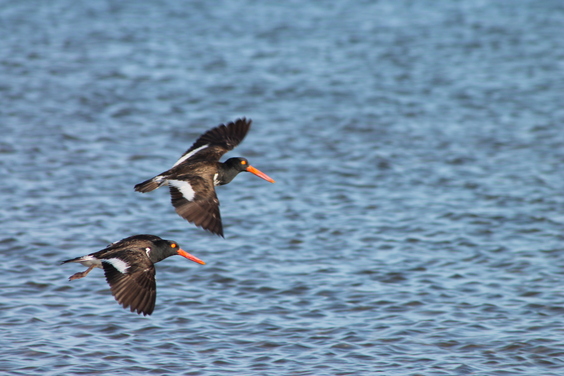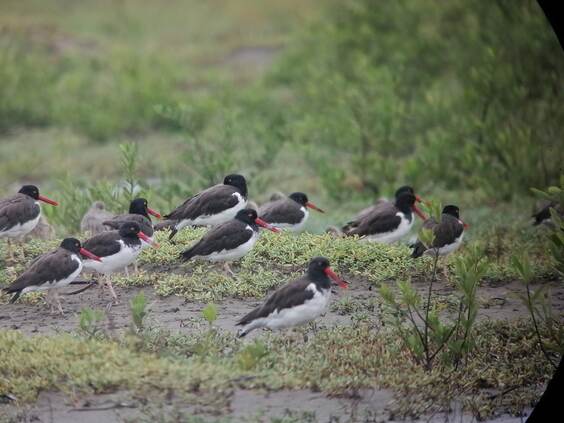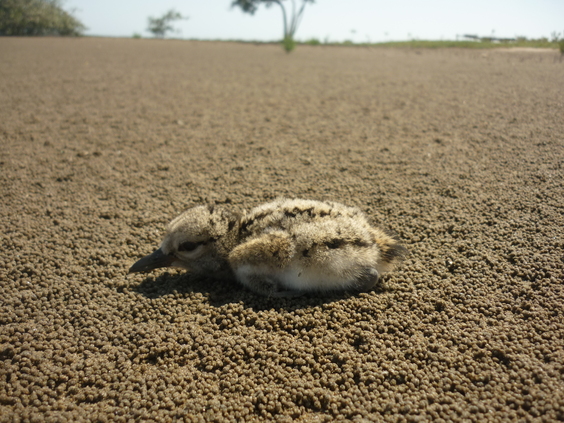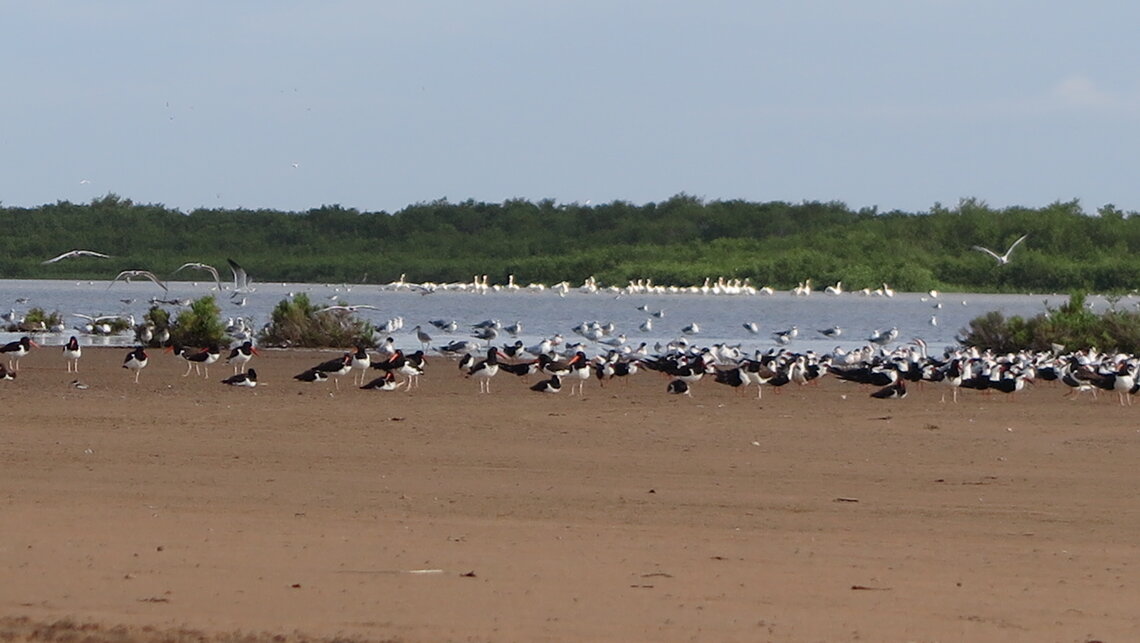By Guillermo Fernández, Mazatlán Academic Unit, Institute of Marine Sciences and Limnology, National Autonomous University of Mexico and José Alfredo Castillo Guerrero, Department of Studies for the Sustainable Development of Coastal Zones, University Center of the South Coast, University of Guadalajara
The American Oystercatcher is a charismatic shorebird that inhabits the coastal zone. It can live between 15 and 20 years and does not begin reproduction until the third year of life. It has a clutch size between 1 and 4 eggs and a variable reproductive success depending on environmental conditions and levels of predation. They are considered monogamous and faithful to their territory during their reproductive life.

In North America, there are two subspecies of the American Oystercatcher H. p. palliatus, and H. p. frazari. The subspecies H. p. frazari is a resident on both coasts of the Baja California peninsula and along the western coast of Mexico. Due to its small population size, restricted distribution, and susceptibility to human activities, this subspecies was classified as “Endangered” by the Mexican Government. The population of H. p. frazari is approximately 3,000 individuals, and 50% of the breeding population uses the islands of Sinaloa. Only Bahía Santa María is home to 250 pairs and 138 non-territorial individuals, which represents around 21.3% of the population. In the winter season, the number of oystercatchers in Sinaloa is 1,533 individuals, which represents 51% of the population. Bahía Santa María is the most critical site with 1,060 individuals. Considering this, it is clear that the coast of Sinaloa is key to the conservation of the Oystercatcher in Mexico.

Despite its importance, the information available about its biology is limited in Sinaloa. Its population trend, reproductive chronology, movement, and fidelity to breeding and non-breeding sites are unknown. This information is necessary for the planning and execution of conservation actions. Therefore, since 2016, the Oystercatcher has been monitored in three coastal lagoons of Sinaloa: Bahía Santa María, Sistema Lagunar San Ignacio-Navachiste-Macapule, and Bahía de Ceuta. This information will help determine their population status and threats during their annual cycle.
To date, standardized monitoring protocols have been developed and implemented during breeding and winter, and community monitoring participation has been encouraged. There is baseline information on breeding biology, distribution, types of habitats used, local movements, and site fidelity during the annual cycle. The main threats to the Oystercatcher on the islands of Sinaloa include predation of eggs and young by mammals (coyotes), other birds, and flooding of their nests by the tide. The intrusion of coyotes on islands with high conservation value has been common in the last decade in Sinaloa, hurting all species of birds that nest at ground level. The most obvious example is the disappearance of colonies of four species that nested on Melendres Island until 2012, and the progressive decrease in the number of oystercatcher pairs after the first coyote record on Melendres Island in 2013.

Silting processes in coastal lagoons increase the probability of intrusions by coyotes, and it is necessary to establish and implement management protocols to minimize their effects. Due to its non-migratory nature and its sensitivity to human disturbances, oystercatchers could be used as an umbrella species, since conservation actions focused on this species would be reflected in other birds that nest in the same habitats, which in Sinaloa includes 12 species of seabirds and shorebirds.
The conservation of the American Oystercatcher requires coordinated work in which CONANP (APFF-Islas del Golfo de California-Sinaloa), community groups, and academics, sharing a shared vision of biodiversity conservation, plan and carry out monitoring and management actions. There are critical challenges to ensure the conservation of the American Oystercatcher, but with the support of other organizations such as Conselva, Costas y Comunidades A.C., and resources from the Sonoran Joint Venture, PAPIIT-UNAM, USAID-USFWS, among others, work continues to protect the Oystercatcher on the coast of Sinaloa.

